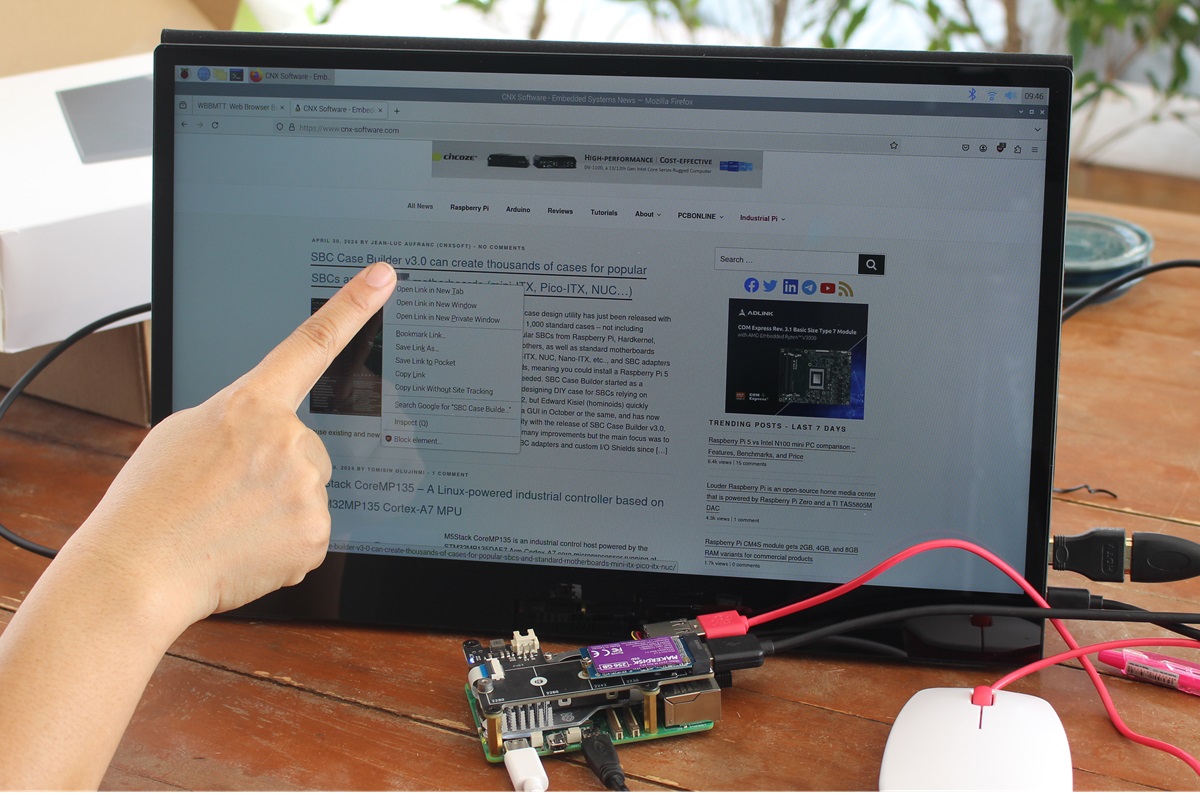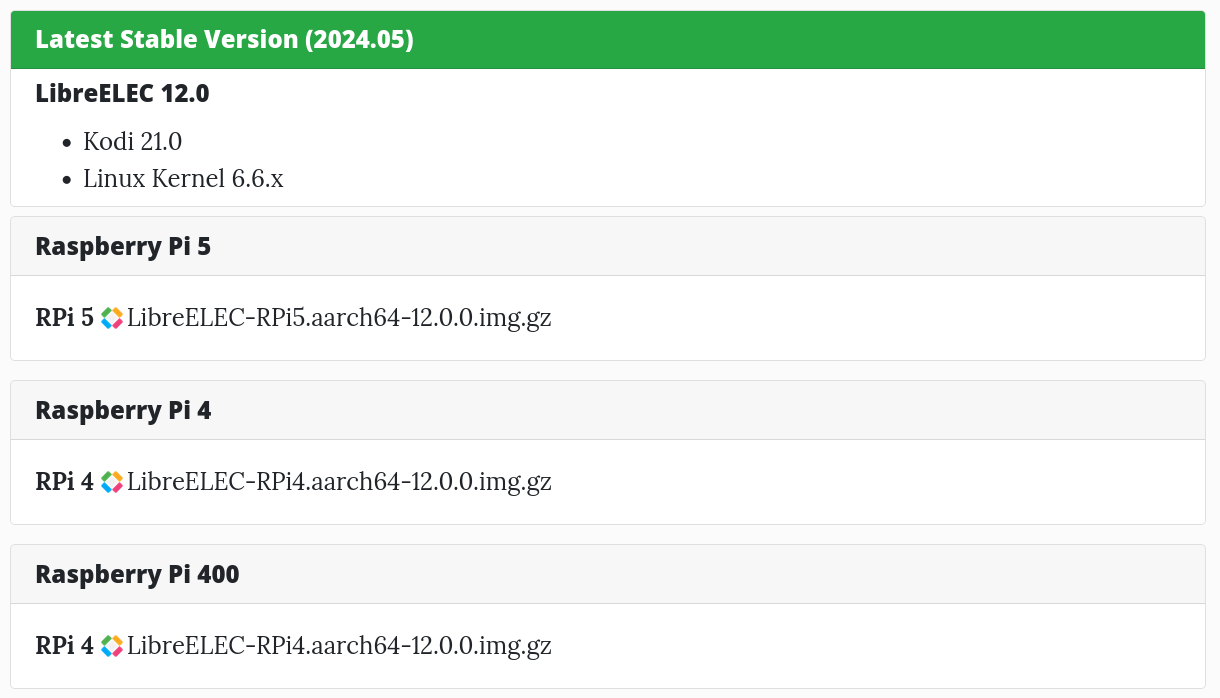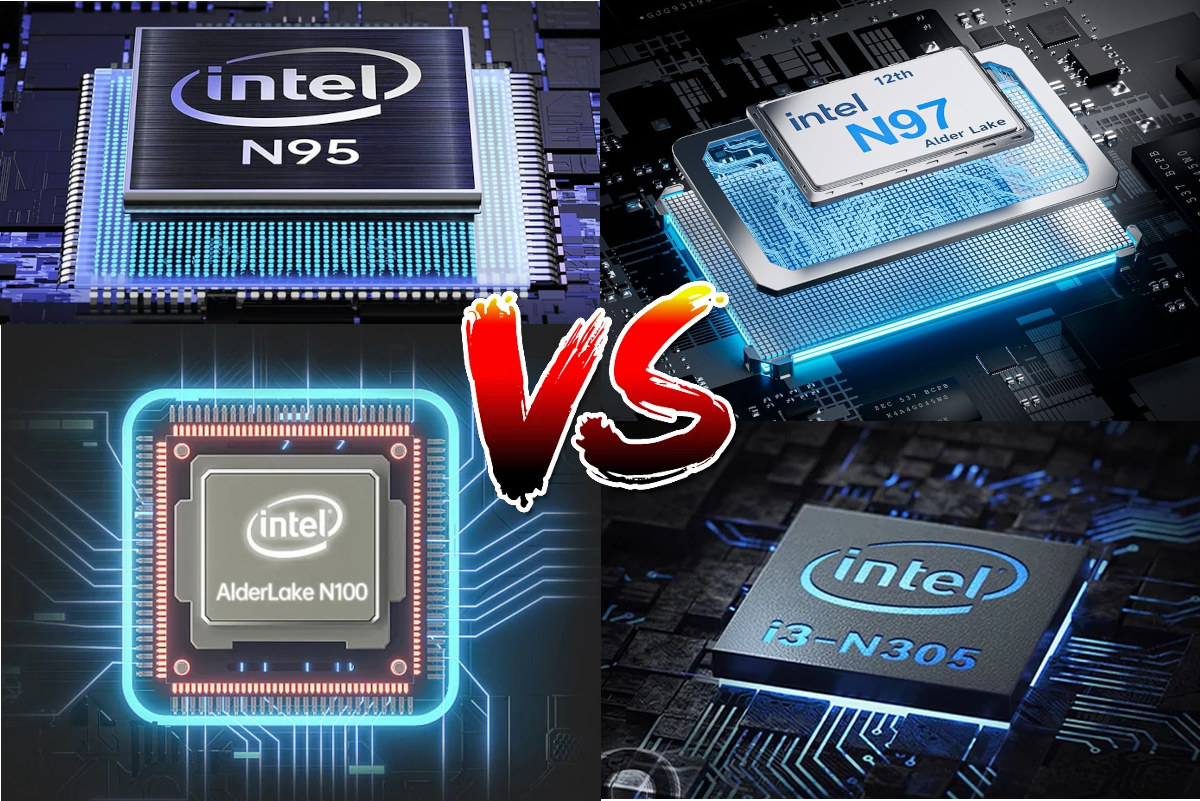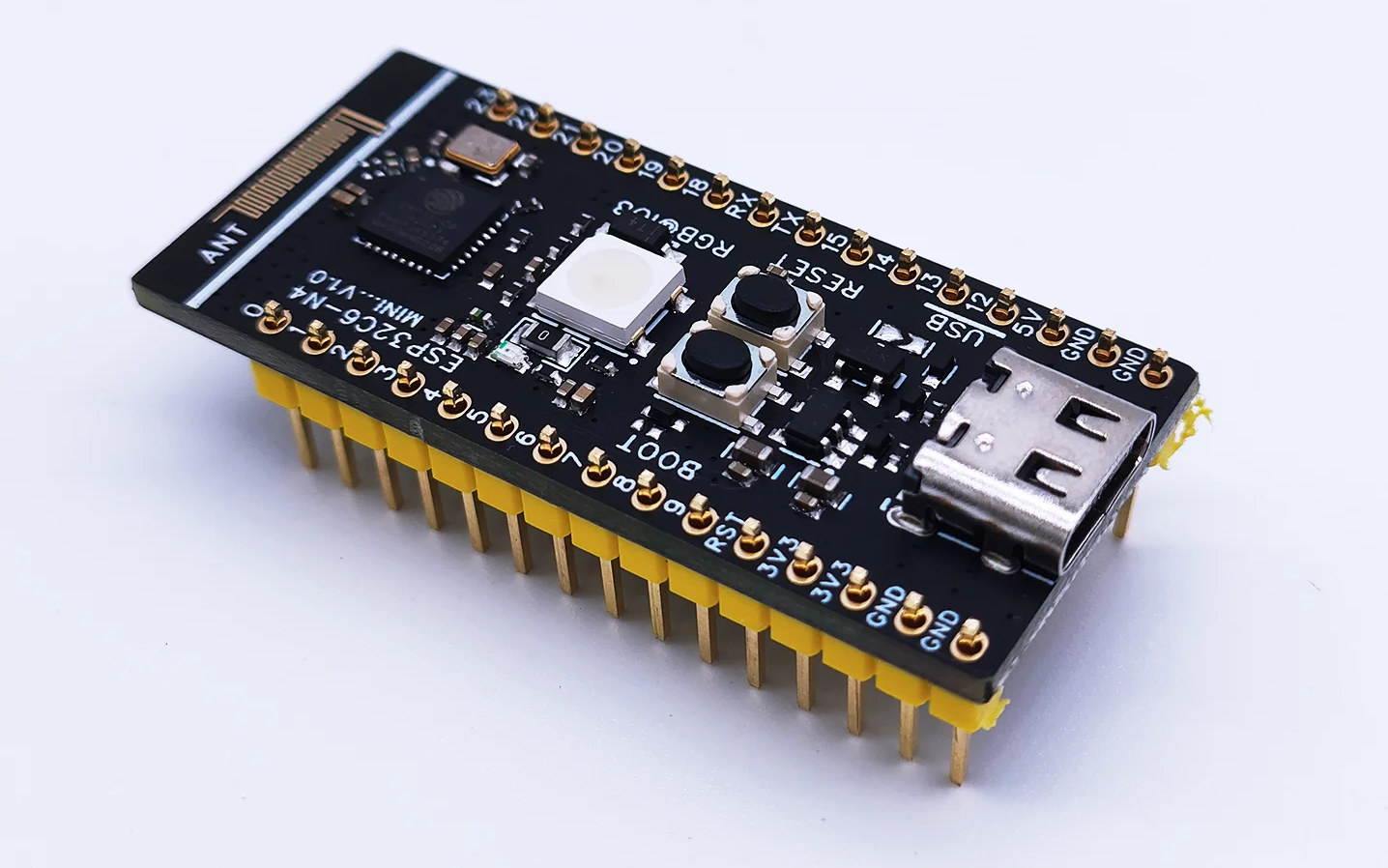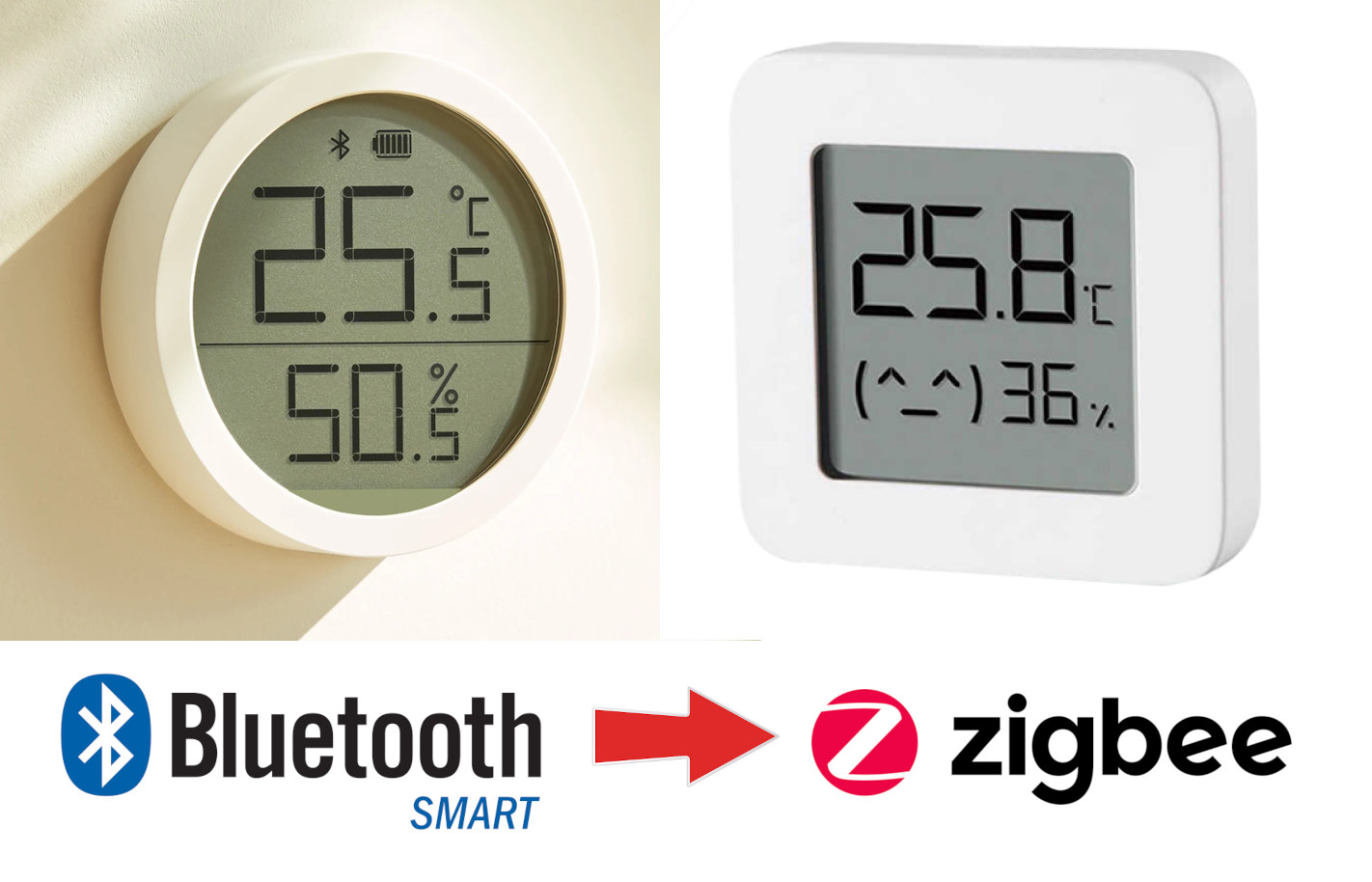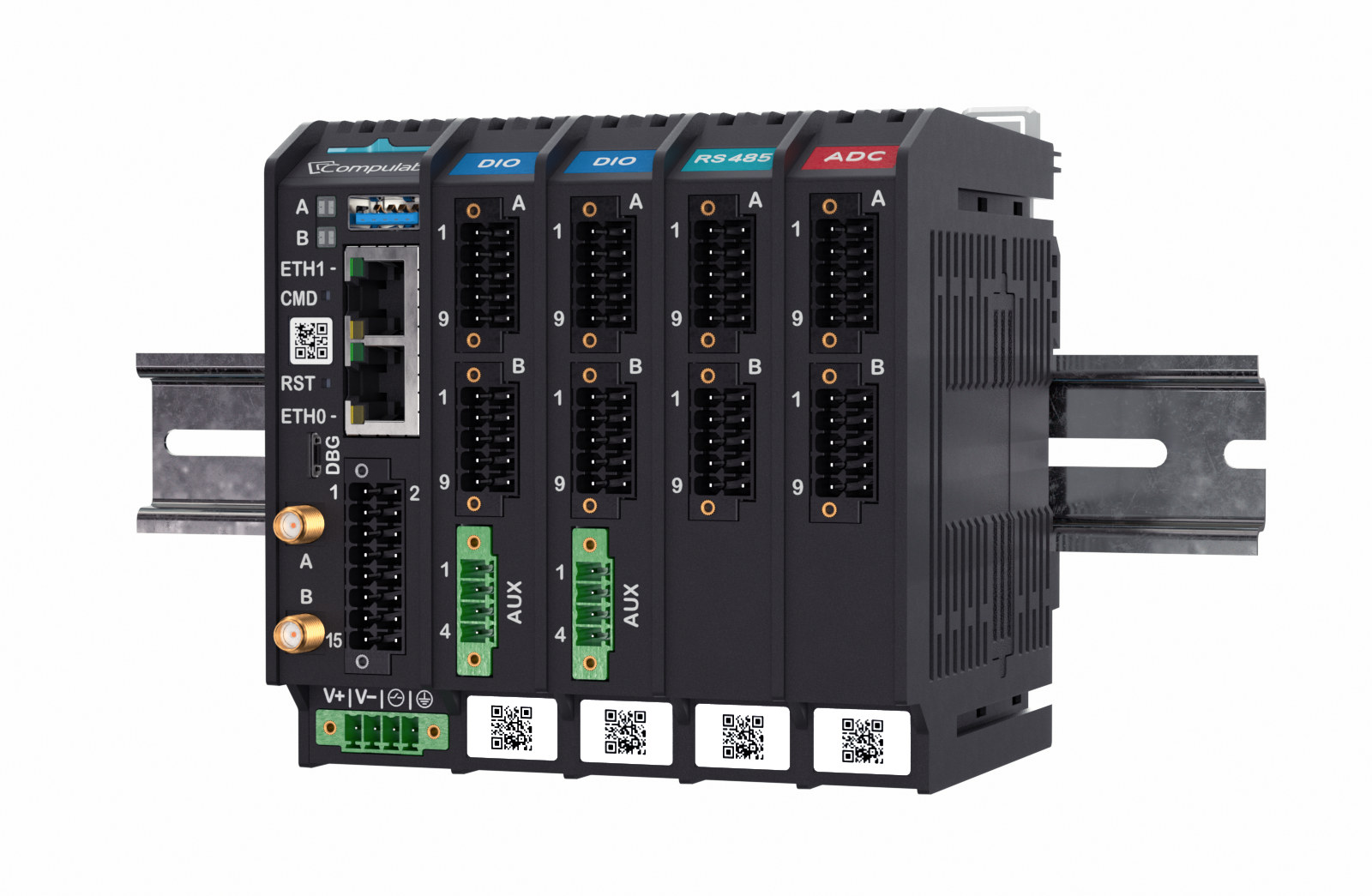Elecrow CrowVi VF156T – or just CrowVi for shorts – is an ultra-thin 15.6-inch portable touchscreen display with mini HDMI and USB-C input ports making it suitable for a wide range of devices from Windows 11 and Linux mini PCs or laptops, SBCs such as the Raspberry Pi 5, and smartphones featuring a USB-C port with DisplayPort Allt. mode. The display supports 10-point multitouch, offers a 1920×1080 “Full HD” resolution, and includes stereo speakers and a 3.5mm audio jack. Besides the USB-C input, it also comes with an additional USB-C PD port for power in case the host does not provide enough power or only HDMI input is used without the touchscreen function. There’s also a “smart case” acting as a foldable stand on the back so you don’t need to bring your own stand. Elecrow sent us a sample of the CrowVi 15.6-inch portable monitor for review and we […]
LibreELEC 12 released with Kodi 21, 64-bit Arm support for Raspberry Pi 4/5, and platforms
As one should have expected after the Kodi 21 “Omega” release last month, the LibreELEC 12 lightweight Linux media center distribution is now out with many devices updated to 64-bit, including the Rasberry Pi 4 and 5 SBCs. LibreELEC 11 was released last year based on Kodi 20 “Nexus” and bringing back support for Amlogic devices. LibreELEC 12 builds on that and benefits from the new features added to Kodi 21 such as FFmpeg 6 and works on Arm platforms based on Allwinner, Amlogic, Broadcom (Raspberry Pi), and Rockchip processors, as well as generic x86 computers. It’s an easy option to create a dedicated HTPC based on a range of hardware with all the features brought by Kodi 21 media center. Since so many platforms are supported there are always some limitations for each and known problems: Raspberry Pi – 50/60fps H.264 HW decoding may need force_turbo=1 or core_freq_min=500 in […]
Intel Processor N95 vs N97 vs N100 vs Core i3-N305 benchmarks comparison
Intel Alder Lake-N processors have been pretty popular in mini PCs and to a lesser extent in single board computers in the last year or so, thanks to their excellent performance/price and features/price ratios. All processors have more or less the same features, but performance differences do exist and do not always match the increasing part number. Since we’ve reviewed a bunch of Alder Lake mini PCs, I’ve decided to compare the performance of the Processor N95, Processor N97, Processor N100, and Core i3-N305 CPUs to have a better understanding of the differences between each part. For this purpose, we’ll rely on five mini PCs: Blackview MP80 (Processor N95), Blackview MP80 (Processor N97), the Intel N100-powered MINIX Z100-0dB and GEEKOM Mini Air12, and the Weibu N10 with a Core i3-N305 CPU. A summary of the specifications is listed in the table below. Some important remarks: Prices are taken from Amazon […]
WeAct ESP32-C6-Mini is the cheapest ESP32-C6 board so far going for less than $4
WeAct ESP32-C6-Mini is a small development board based on Espressif Systems ESP32-C6 WiFi 6, Bluetooth, and 802.15.4 wireless SoC that’s the cheapest we’ve seen so far selling for just $3.86 on Aliexpress. WeAct was one of the first companies to launch a third-party ESP32-C6 development board year with the price starting at just $6. I still remember the excitement around the first $5 ESP8266 WiFi 4 module when we first covered it in 2014, and ten years later, we can get a full $4 development board with a more powerful 160 MHz RISC-V microcontroller, WiFi 6, Bluetooth 5.0, and an 802.15.4 radio for Thread, Zigbee, and Matter. WeAct ESP32-C6-Mini specifications: Wireless SoC – ESP32-C6-N4 CPU Single-core 32-bit RISC-V clocked up to 160 MHz Low-power RISC-V core @ up to 20 MHz Memory – 512KB SRAM, 16KB low power SRAM Storage – 320KB ROM, and 4MB flash Wireless – 2.4 GHz […]
Geekworm X1011 board adds up to four NVMe SSDs to the Raspberry Pi 5
Geekworm X1011 is a new expansion board for the Raspberry Pi 5 with four M.2 sockets enabling the insertion of up to four M.2 NVMe SSDs with data pushed through the PCIe Gen2 interface of the popular SBC. We were already wondering why most people would want to connect two NVMe SSDs to the Raspberry Pi 5 when the Geekworm X1004 HAT+ was launched considering the 5GT/s limitation from the board and the PCIe switch, but the company decided to double the number of drives with the X1011 meaning each drive can achieve up to around 100 MB/s (or 400MB/s) when used simultaneously. It does look nice and fairly compact though. Geekworm X1011 specifications: Supported SBC – Raspberry Pi 5 and other SBCs with a compatible 16-pin PCIe FPC connector and mounting holes Chipset – ASMedia ASM1184e PCI express packet switch with 1x PCIe Gen2 x1 upstream port and 4x […]
Enabling Zigbee in Bluetooth LE temperature and humidity monitors from Xiaomi and Qingping using Telink TLSR8258 WiSoC
Qingping CGDK2 and Xiaomi LYWSD03MMC Bluetooth LE (BLE) temperature and humidity monitors based on Telink TLSR8258 can be switched to Zigbee thanks to a custom firmware flashed over-the-air. Telink TLS8258 is a multi-protocol wireless microcontroller supporting Bluetooth LE 5, Bluetooth Mesh, Zigbee, RF4CE, Thread, 6LoWPAN, HomeKit, ANT, and 2.4GHz proprietary and found in boards such as the LILYGO T-Zigbee and various products. Some products only enable one wireless protocol, for example, Bluetooth LE as in the just-mentioned Qingping and Xiaomi monitors, but “SmartHomeScene” has found out that it was possible to switch from BLE to Zigbee on those by simply updating the firmware. The Telink TLS8258 devices mentioned above will publish data over BLE every 10 minutes (unless humidity or temperature changes, in which case data is transmitted immediately) with the default firmware, but Zigbee can be enabled by using the pvvx custom firmware for the following models: Xiaomi LYWSD03MMC […]
NXP i.MX 8M Plus powered DIN-Rail IoT gateway takes DIO, RS232, RS485, and ADC expansion modules
Compulab IOT-DIN-IMX8PLUS is a DIN Rail IoT gateway powered by an NXP i.MX 8M Plus AI SoC that takes various expansion modules with digital inputs and outputs (DIO), RS232, RS485, or ADC. The new model looks to be an evolution of the Compulab IOT-GATE-IMX8PLUS Arm Linux IoT gateway introduced in 2022 with many of the same features, except the IOT-DIN-IMX8PLUS is designed to be installed in a cabinet or other installation with a DIN Rail, and can easily be connected to additional I/O modules. Compulab IOT-DIN-IMX8PLUS specifications: SoC – NXP i.MX 8M Plus Quad or Quad-lite CPU Quad-core Arm Cortex-A53 processor @ up to 1.8 GHz Arm Cortex-M7 real-time core @ 800 MHz GPU – Vivante GC7000UL 3D GPU, Vivante GC520L 2D GPU VPU – 1080p H.265/H.264 video decoder & encoder DSP HiFi 4 DSP AI accelerator – 2.3 TOPS Neural Processing Unit (NPU) on i.MX 8M Plus Quad only […]
Yocto Project 5.0 “Scarthgap” released with Linux 6.6 and plenty of changes
The Yocto Project 5.0 codenamed “Scarthgap” has just been released with Linux 6.6, glibc 2.39, LLVM 18.1, and over 300 other recipe upgrades. As a result of the release, the developers have made it available for download (bz2 tarball). The Yocto Project, or Yocto for shorts, is a popular framework used to create custom embedded Linux distributions, and we’ve played with it over the year showing how to create a minimal image for the Raspberry Pi, and last year, we used it again when reviewing two industrial development boards, namely the VOIPAC IMX8M and ADLINK i-Pi SMARC 1200. Yocto is quite a powerful framework/build system with plenty of options that make it highly customizable, but the learning curve is fairly steep. Some other changes in Yocto Project 5.0 include: New variables: CVE_DB_INCR_UPDATE_AGE_THRES: Configure the maximum age of the internal CVE database for incremental update (instead of a full redownload). RPMBUILD_EXTRA_PARAMS: […]


